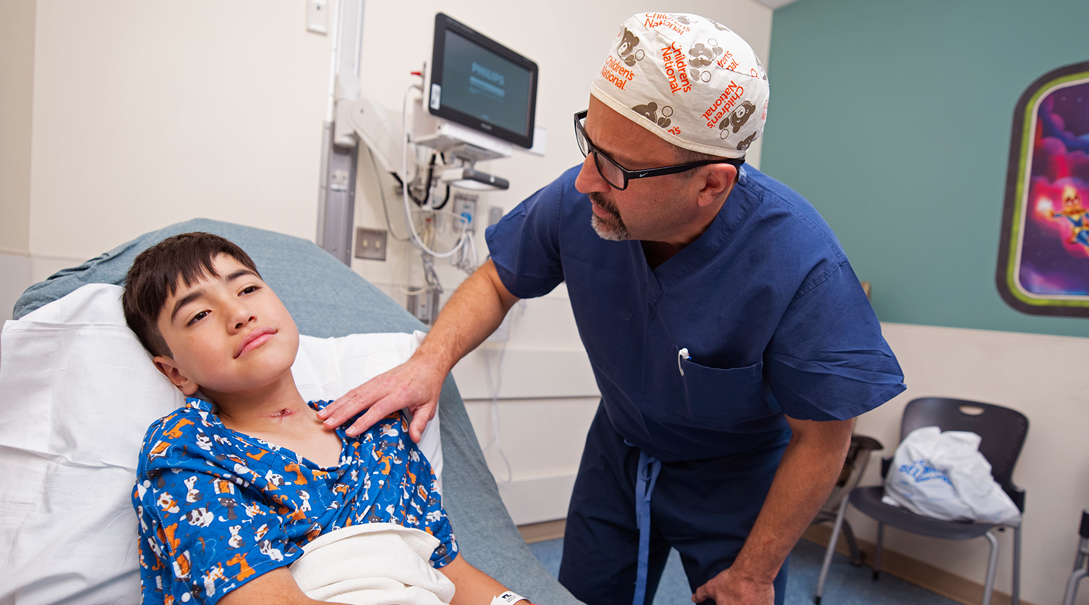Condition
Pediatric Otitis Media (Middle Ear Infection)
What You Need to Know
Pediatric otitis media, or a middle ear infection, is inflammation located in the middle ear.
Key Symptoms
Otitis media can cause the following symptoms:
- Unusual irritability
- Difficulty sleeping or staying asleep
- Tugging or pulling at one or both ears
- Fever
- Fluid draining from ear(s)
- Loss of balance
- Hearing difficulties
- Ear pain
Diagnosis
In order to diagnose an ear infection, your child's pediatrician may perform one or all of the following tests:
- Complete medical history
- Physical exam
- Ear exam using an otoscope
- Tympanometry
- Hearing test
Treatment
Treatment may include:
- Antibiotic medication by mouth or ear drops
- Medication (for pain)
- Surgery to place tubes (myringotomy)
- Adenoid removal

Schedule an Appointment
Our pediatric specialists provide personalized care for your child’s physical, mental and emotional health needs. Meet the providers who treat otitis media and schedule an appointment today.
Frequently Asked Questions
What is a middle ear infection?
Who is at risk for getting ear infections?
What causes pediatric ear infections?
How is a pediatric ear infection diagnosed?
What are the effects of pediatric ear infections?
What are the different types of pediatric ear infections?
What are the symptoms of pediatric ear infections?
How can pediatric ear infections be treated?
Caring for the Senses to Support Children's Development
Diego Preciado, MD, PhD, chief of Otolaryngology and Joseph E. Robert, Jr. Professor of Pediatric Otolaryngology, aims to set the gold standard for care of a child's ear, nose and throat (ENT) — pathways to the senses.
Departments that Treat Otitis Media (Middle Ear Infection)
.jpg)
Ear, Nose and Throat (Otolaryngology)
Our ENT specialists offer expert care in ear, nose and throat conditions. Learn about our advanced pediatric ENT (otolaryngology) treatments.

Help Kids and Make a Difference
Invest in future cures for some of life's most devastating diseases. Give today to help more children grow up stronger.








